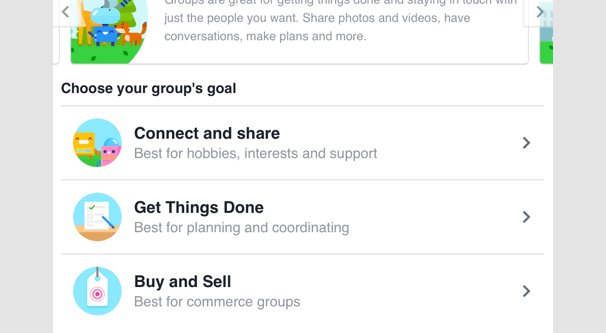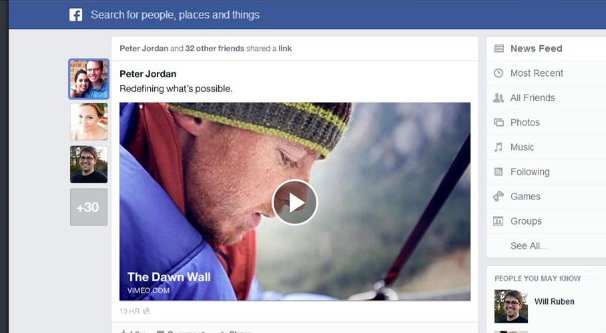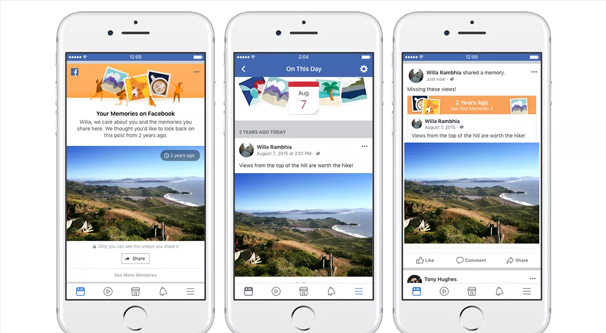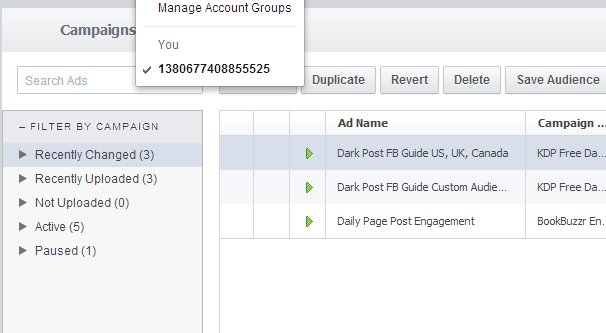 Written by ContentPowered.com
Written by ContentPowered.com
Clothing, apparel, beauty, fashion; these kinds of brands are some of the best to market using social media. Since modern social media is such a hugely visual platform, it makes sense to showcase visual items, and clothing – coupled with a few good models – can capitalize on it.
If you’re interested in getting into Facebook marketing, or pushing your existing Facebook marketing into high gear, I’ve provided a range of tips for beginner, intermediate, and even some advanced marketers below. Just scroll down until you start seeing tips appropriate to your existing skill level.
Fully Form Your Facebook Page
This may seem like an ultimate basic tip, and it kind of is, but it’s always worth noting. Your Facebook page should be fully fleshed out before you try to put any amount of effort into using it for marketing.
Here’s what you should check before you begin:
- Make sure your page is using the right category.
- Use a compelling image as your profile picture.
- Use a compelling image – or video – for your cover photo.
- Fully flesh out your About section with business information, milestones, your company story, and other information.
- Use tabs in the sidebar for other important links, like other social profiles, a link to a Group, or a shop link.
- Make sure your feed is active with at least one new post every day.
- Customize your page’s call to action button.
Remember that most of the time, people who visit your Facebook page are there to learn more about your brand, not just to make a purchase. Your Facebook page, then, should mostly be focused on growing a brand personality, portraying your story or activism, and generally putting forth the image of who you are for others to see.
Build a Facebook Community Group
Facebook groups are going to be increasingly important moving forward as Facebook rolls out their new community-focused redesign. While I have no doubt that brand features will still exist, backlash against the commercialization of the platform has led Facebook to try to emphasize social and casual relationships over brand-based relationships.
As such, it can be a good idea to start and maintain a Facebook Group for marketing purposes over the coming months. A group can be a tight-knit community centered around your brand, but you shouldn’t use it exclusively to sell to users. Instead, use it to build relationships and engage with your community. If they have questions or concerns, address them. If they’re loyal fans, use the group to give out deals and discounts. If they have common issues with your business practices or product quality, listen to their feedback and adapt to it.
Be Responsive on Facebook Messenger
Facebook messenger is Facebook’s means of communications, and it can be a great idea to make use of it on a regular basis. You can’t send out unsolicited messages – and even if you do, they’ll probably end up in the hidden message requests – but you can be responsive to customer inquiries.
If you don’t have the manpower or the attention to do it manually, you can also use a Facebook messenger bot to guide users through your system, referring different users to different locations based on their needs. Plus it gets you that coveted “very responsive to messages” label on your profile, encouraging more customers and potential customers to message you for a fast response.
Let Users Get a Look Behind the Curtain
As I mentioned above, the core purpose of social media is not to sell products, though that does happen. The core purpose is to build up your story and put forth your brand image for others to absorb. This is why some of the most effective and engaging posts you can make are behind the scenes looks at your company.
For example, you can take users through a video tour through your manufacturing process to highlight how it’s sustainable. You can take photos of the sources of your raw materials to show that they’re ethical. You can even address specific customer concerns publicly for anyone who may share those concerns.
Learn the Art of Visual Storytelling
Facebook may allow you to create plain text posts, but they rarely do well. Every other kind of visual media performs better than a basic text post, both in terms of user engagement and in terms of the Facebook algorithm. Thus, to be successful on Facebook, you need to learn the art of visual storytelling.
With regards to a clothing brand, you need to look at the clothing you offer and figure out what kind of story can be made surrounding it.
- If you sell athletic apparel, you can create dynamic images of athletes using your apparel to compete, people out hiking or on adventures wearing it, and so on.
- If you sell high-class dressy suits and dresses, go all-in with the high society look. Make your images showcase glamour, parties with the rich and famous-looking, and other glamorous imagery.
- If you sell casual wear, showcase people lounging and living their daily lives in comfort. Even just someone comfortably wearing your clothing while reading on the porch can be an idealized version of a comfortable life.
Visual storytelling needs to suit not just your brand, but the expected use of the clothing you’re selling. It needs to say, “Look, you too can live this life, if you have these clothes.”
Make Use of Video Content
The epitome if visual content is video content. Video can be used anywhere on Facebook, from your cover photo and profile picture to your individual posts to your ads. While video production can still be a little complicated, it’s a good idea to learn.
Facebook has been pushing video content for a couple of years now. Videos get more exposure in the algorithm by default compared to other types of posts, and they tend to be more engaging as well.
As an added benefit, Facebook also has a specific kind of shoppable video post you can use. These posts have layered-on calls to action that allow users to make a purchase or save a product for later while watching the video. Combine this with video that shows your apparel in action and you can see why it can be so attractive.
Sell Directly Through Facebook
Though less popular than it used to be, you can set up a web store through Facebook, or have a store synced to your existing web store using platforms like Shopify, BigCommerce, and Magento. This allows users who are interested in your products the opportunity to purchase directly through the platform.
More importantly, by setting up a Facebook catalog, you gain access to some additional types of Facebook ads, as well as the ability to create shoppable posts on Instagram, which can be huge for an apparel brand with a strong visual storytelling base.
Run Plenty of Promotions with Seasonal Themes
This might sounds like a basic tenet of modern commerce, but you’d be surprised at how many brands actually fail to take advantage of timely promotions. People expect sales around holidays, and if you disappoint them, they might just start looking for similar products elsewhere.
What kinds of promotions can you run? The only limit is your creativity. Do a 12 days of Christmas promotion with different deals each day leading up to the holiday. The do the same thing for Christmas in July. Run promotions on autumn-colored or themed clothing in the lead-up to Halloween. Put together beach-themed outfits to sell on sale in the opening weeks of summer. Really, you can do pretty much anything you want, so long as you do something.
Focus on Building a Mailing List
Remember that Facebook is a platform with its own best interests at heart, and it might not always be the core of your business. Rather than trying to sell directly through it, focus ads and your CTA button on getting people to sign up for your mailing list. A mailing list is a means of contacting your audience that does not rely on any third party and still allows you to sell directly to customers. It’s great, because a sign-up is an easier sell than an actual product sale, so these ads can be even cheaper and get even more returns than product sales ads.
Network with Visual Influencers
Influencer marketing is the next big wave in marketing, and while we’re already past the crest of the wave, you can still hitch a ride. Influencers are people who have a significant audience, and who can sway the opinions of that audience with their reviews and opinions.
Finding those people can be tricky, but a brand approaching them with a deal is part of their endgame, so it’s a great idea. Get them to wear some of your apparel and promote it to their audience.
Promote Community Content
One great benefit a clothing brand has over many other kinds of brands is the ability to create ready-made visual content with your customers. Create a hashtag for use across platforms, and create a way for users to submit photos of themselves wearing your clothing. You can then curate and share some of these photos – the best ones, that make your clothes look the best – with your audience. This makes your highlighted customers feel like influencers for a moment, and it lets other people see what your clothing looks like on real people, rather than just the models you pay.
Always Be Running Ads
Ads, of course, are the backbone of successful Facebook marketing. You need to be running ads pretty much all the time.
You don’t need to invest a huge budget into them, but keeping some ads running every day will go a long way towards building brand awareness, promoting your mailing list, getting clicks through to your website, and selling products.
Make Heavy Use of Custom Audiences
The biggest strength of Facebook ads over other ad platforms is the ability to create custom audiences for marketing. You can make an audience out of people who follow your page. You can make an audience out of people who have subscribed to your mailing list. You can make an audience out of people who have visited your website, or even people who have looked at your product pages. You can even create audiences as lookalike audiences who simply share similar traits with the people who did any of the above.
Use the Facebook Pixel and Remarketing Ads
Using the Facebook Pixel allows you to track users on your site, and you can then create a custom audience based on people who visited your product pages.
Run ads to those people with featured products they were looking at and you’re bound to get a lot of “bonus” conversions. Remarketing is one of the smartest uses of your ad money.
Branch Into Instagram
While it’s not technically Facebook, Instagram still has a lot of integrations across both it and Instagram, since Facebook owns the image-focused social network as well. Instagram has extremely high engagement and is a very visual platform, meaning you can do extremely well with your visual storytelling on the site. Better yet, you can run Facebook ads on both platforms, and even create specific shoppable posts if you have a Facebook catalog set up.
Apparel brands have a lot of options for marketing – as many as there are outfits in their digital closets. Facebook is a great place to put that marketing into action for minimal cost. I highly recommend it.










